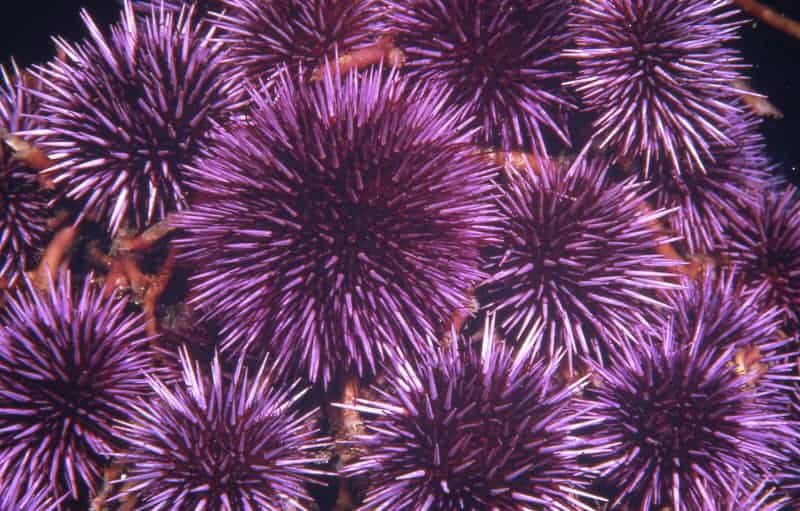Across the world, temperate reefs are composed of rock, and upon those rocks, various species of large marine algae called kelp will grow and create three-dimensional structures known as kelp forests. Kelp forests are one of the most biodiverse and productive ecosystems in the world as they provide habitat, food, and refuge to fish, invertebrates, birds, and mammal species. In addition, kelp forests are able to sequester carbon from the atmosphere, create oxygen, dampen wave energy, and alter sedimentation flow; all of which have effects that reach far beyond the kelp forest ecosystem and affect coastal communities and landscapes, as well as the global climate. Battered by waves, kelp forests are robust ecosystems that can thrive in challenging conditions. However, similar to terrestrial forests, under certain circumstances, these underwater forests can succumb to deforestation. The occurrence of this phenomenon has increased globally in recent years.
Marine deforestation can be caused by biological factors such as destabilization of the food web, for example, due to the loss of a predator or an overabundance of herbivores such as sea urchins. Oceanographic factors, such as marine heat waves and El Niño, can also weaken kelps and create conditions that make it difficult for them to grow, absorb nutrients and reproduce. Often it is a combination of these factors that result in kelp deforestation.
Since 2014, bull kelp forests in northern California have declined due to a combination of extreme warm water events (a marine heat wave known as the “Blob” and an El Niño) and dramatic increases in native purple sea urchin populations, which feed on kelp. Sea otters have been absent from waters north of San Francisco for over 150 years and in 2014, giant predatory sunflower sea stars succumbed to a mysterious marine disease, the Sea Star Wasting Syndrome. Sea otters and sunflower stars are both important urchin predators, and without them, the ecosystem’s ability to keep urchin numbers in check is severely diminished.
This combination of extreme warm water events, an absence of urchin predators, and extensive purple urchin recruitment, led to a large-scale shift from kelp forests to an alternate state composed of areas dominated by urchins. This state of the reefs is referred to as “urchin barrens”. Though some organisms thrive in barrens, most do not, and the overall abundance and diversity of species in urchin barrens is lower than in kelp forests. Many of the services that kelp forests provide such as fisheries, mediation of coastal erosion, biomass production and carbon sequestration are lost when forests turn into barrens.
Urchin barrens can persist for a long time (years to decades), but given the right conditions, they can undergo a reverse shift back to a kelp forest in as little time as a single season. This phase shift from urchin barren back to kelp forest is contingent on changes in biological composition of the ecosystem, as well as the oceanographic conditions. Sometimes these changes occur naturally, but they can also be helped along by human intervention. Reef Check is working to restore kelp forest ecosystems by removing urchins from a number of sites off our coast. The hope is that this removal of herbivores will give kelp a chance to reestablish and given the right environmental conditions, persist on its own as lush kelp forests that once were common on these reefs.
 Subscribe to Newsletter
Subscribe to Newsletter Donate
Donate Shop
Shop 0
0









